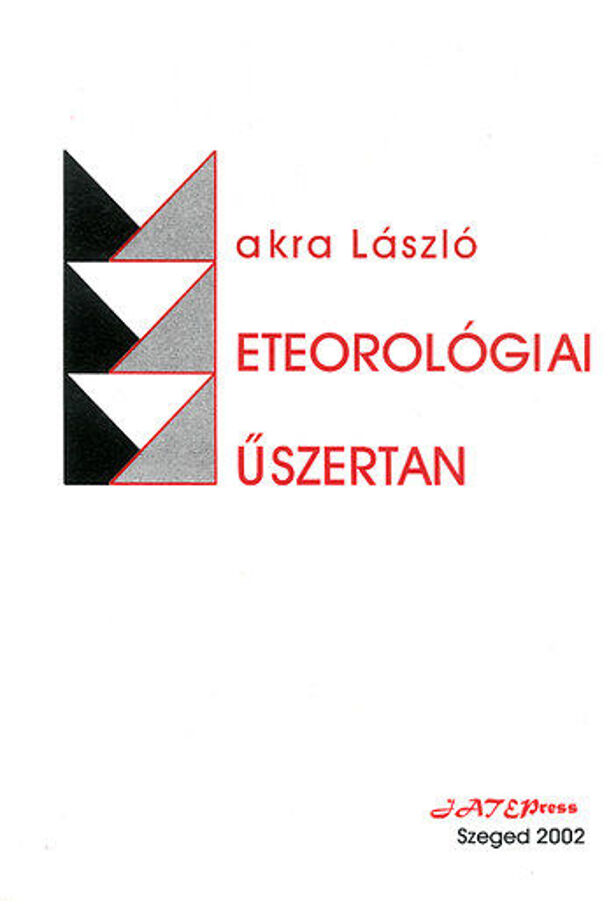Meteorological instruments
Delivery time: 2 - 3 business days
Quantity:
HUF 1,090
Description
Table of contents: PREFACE 1. INTRODUCTION 2. GENERAL CONCEPTS 2.1 Classification of meteorological observation stations - observation network 2.2 Times of observations 2.3 The instrument garden 2.4 Accuracy of measurements 2.5 General characteristics of writing instruments 2.6 Comparison of writing instruments 3. TEMPERATURE MEASUREMENT 3.1 History of temperature measurement 2 and units 3. Gas thermometers 3.3 Liquid thermometers 3.3.1 Mercury thermometers 3.3.2 Thermometers filled with organic liquids 3.4 Metal thermometers 3.4.1 Thermographs - rolling up the thermograph tape 3.5 Electric thermometers 3.5.1 Thermocouple thermometers 3.5.2 Resistance thermometers 3.5.3 Thermistors 3.6 Temperature measurement with a laser 3.7 Some additions to the measurement of air temperature 4. MEASUREMENT OF RADIATION 4.1 Measurement of the intensity of radiation 4.1.1 Absolute instruments for measuring direct radiation 4.1.2 Relative instruments for measuring direct radiation 4.2. Measurement of radiation balance 4.3 Measurement of radiation duration 4.4 Radiation recording instruments - processing of the radiation recorder tape 5. MEASUREMENT OF AIR PRESSURE 5.1 History and units of air pressure measurement 5.2 Classification of barometers 5.2.1 Liquid barometers 5.2.1.1 Corrections to improve the raw barometer reading 5.2.1.2 A other sources of error in mercury barometers 5.2.1.3 Types of mercury barometers 5.2.2 Barometers without liquid (aneroids) 5.3.2 Boiling point thermometers (hypsometers) 5.3 Comparison of barometers 6. MEASUREMENTS RELATED TO ATMOSPHERIC WATER 6.1 Measurement of air moisture 6.1.1 Absorption moisture meters 6.1.2 Hair hygrometers 6.1.2.1 Hydrographs - hydrograph tape processing 6.1.3 Psychrometers 6.1.3.1 Some notes on the use of psychrometers 6.1.4 Condensation hygrometers 6.2 Cloud observation 6.2.1 Cloud height 6.2.2 A type of clouds 6.2.2.1 Definition of cloud base 6.2.3 Amount of clouds 6.2.4 Clouds migration 6.3 Precipitation measurement 6.3.1 History and units of precipitation measurement 6.3.2 Precipitation measuring instruments 6.3.2.1 Placement of the precipitation gauge 6.3.3 Precipitation recording instruments 6.3.4 Measurement of snow thickness and snow density 6.3.5 Measurement of microprecipitation 6.4 Measurement of evaporation 6.4. 1 Factors affecting evaporation 6.4.2 Methods of measuring evaporation 6.4.3 Instruments for measuring evaporation 7. OBSERVING THE WIND 7.1 History of wind observations and units of wind measurement 7.2 Detecting wind without an instrument 7.3 Detecting wind with an instrument 7.3.1 Measuring wind direction and wind pressure 7.3 .2 Measurement of wind speed and gustiness 7.3.2.1 Rotary anemometers 7.3.2.2 Aerodynamic anemometers 7.3.2.3 Electric anemometers 7.4 Processing of wind bands 8. MEASUREMENT OF VISIBILITY 8.1 Impact factors of visibility 8.2 Without detection of visibility 8.3 Detection of visibility with the instrument 9. OBSERVATION OF LIGHT PHENOMENA 10. METHODS AND INSTRUMENTS OF THE RESEARCH OF THE HIGH ATMOSPHERE 10.1 The object of the research of the upper atmosphere and m odszerei 10.2 The history of high-atmosphere research 10.3 The measurement of high-altitude wind 10.4 The measurement of high-altitude air conditions APPENDIX
| publisher | JATEPress |
|---|---|
| writer | Makra László |
| scope | 132 |
| volume unit | oldal |
| ISBN | 3159780001206 |
| year of publication | 2002 |
| binding | soft board, glued |


